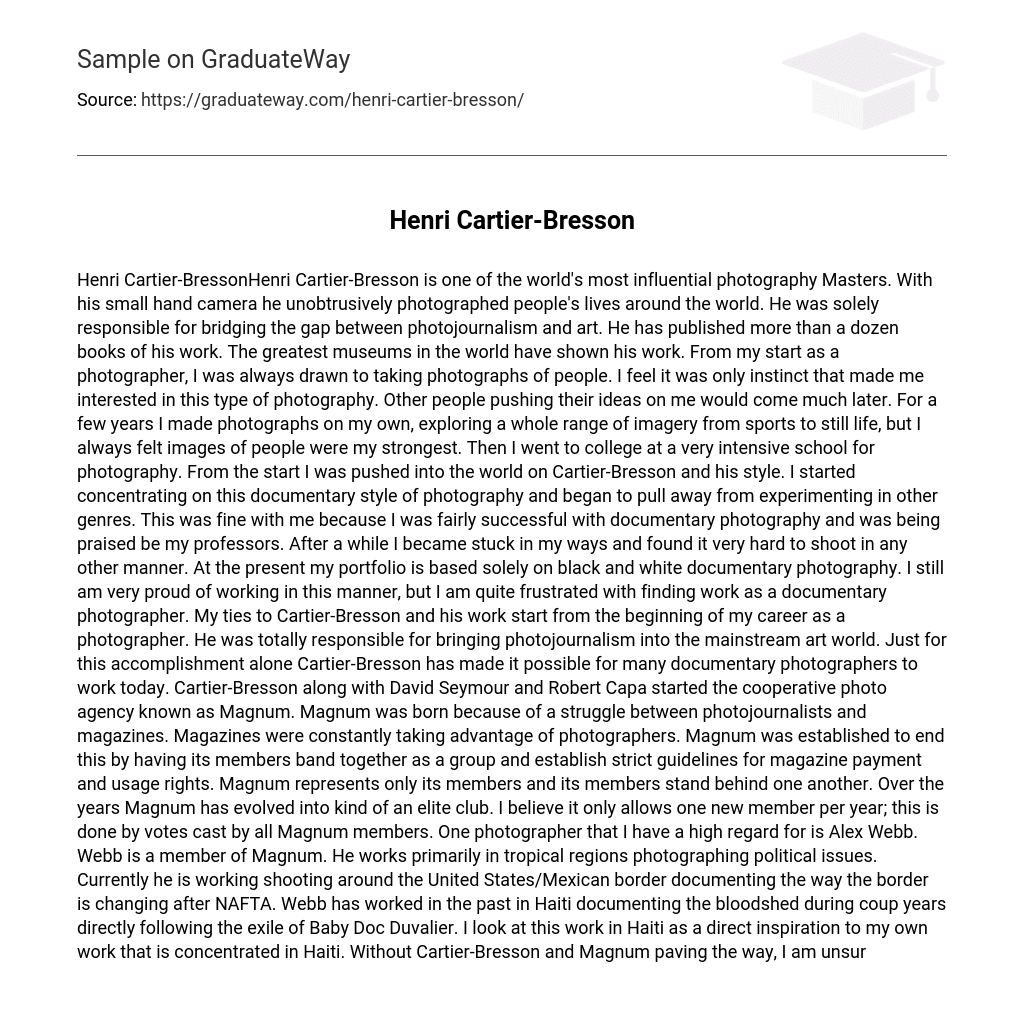Henri Cartier-Bresson is a renowned photography Master who had a significant impact on the world. His skillful use of a small hand camera allowed him to capture people’s lives in various parts of the globe without disturbing their natural moments. Additionally, he played a crucial role in connecting the realms of photojournalism and art.
This highly accomplished artist has had over a dozen books published, showcasing his extraordinary work. Additionally, his pieces have been featured in the top museums worldwide. As I began my photography journey, capturing images of people has always fascinated me. My inclination towards this genre of photography came from instinct alone, as external influences pushing me in this direction only emerged later on.
I spent some time taking pictures by myself, delving into various subjects like sports and still life. However, I always believed that my photographs of people were the most powerful. Later, I attended a rigorous photography school in college where I was immediately introduced to Cartier-Bresson and his unique style. This influenced me greatly, leading me to focus primarily on documentary photography and move away from exploring different genres.
Although I initially found satisfaction in my situation, receiving recognition from my professors and achieving success in documentary photography, I gradually became inflexible and struggled to adapt to different shooting styles. As a result, my portfolio exclusively showcases black and white documentary photography, which brings me great pride. However, the limited job prospects within this field leave me feeling frustrated.
Since the beginning of my photography career, I have had a strong connection to Cartier-Bresson and his artistic contributions. He played a crucial role in bringing photojournalism to the forefront of the art world. This remarkable accomplishment has allowed many documentary photographers, including myself, to continue practicing our craft today. Alongside David Seymour and Robert Capa, Cartier-Bresson co-founded Magnum, a cooperative photo agency that arose from conflicts between photojournalists and magazines.
Magazines were consistently exploiting photographers. In order to address this issue, Magnum was formed with the purpose of uniting its members to establish concrete rules regarding payments and rights for magazine usage. Magnum exclusively represents its members, who support each other in their endeavors. As time has passed, Magnum has transformed into an exclusive community. It appears that only one new member is admitted annually, determined through voting among all Magnum members. One particular photographer whom I greatly admire is Alex Webb.
Webb, a member of Magnum, primarily focuses on photographing political issues in tropical regions. Currently, he is documenting the changes along the United States/Mexican border after NAFTA. In the past, Webb has also captured the bloodshed during the coup years in Haiti, following the exile of Baby Doc Duvalier. I find his work in Haiti to be a direct inspiration for my own concentration in Haiti.
Without the contributions of Cartier-Bresson and Magnum to the photography industry, the destiny of Alex Webb and similar photographers remains uncertain. This is why I have chosen Cartier-Bresson as the focal point of my papers. I believe that he has significantly influenced the development of all documentary photographers.





